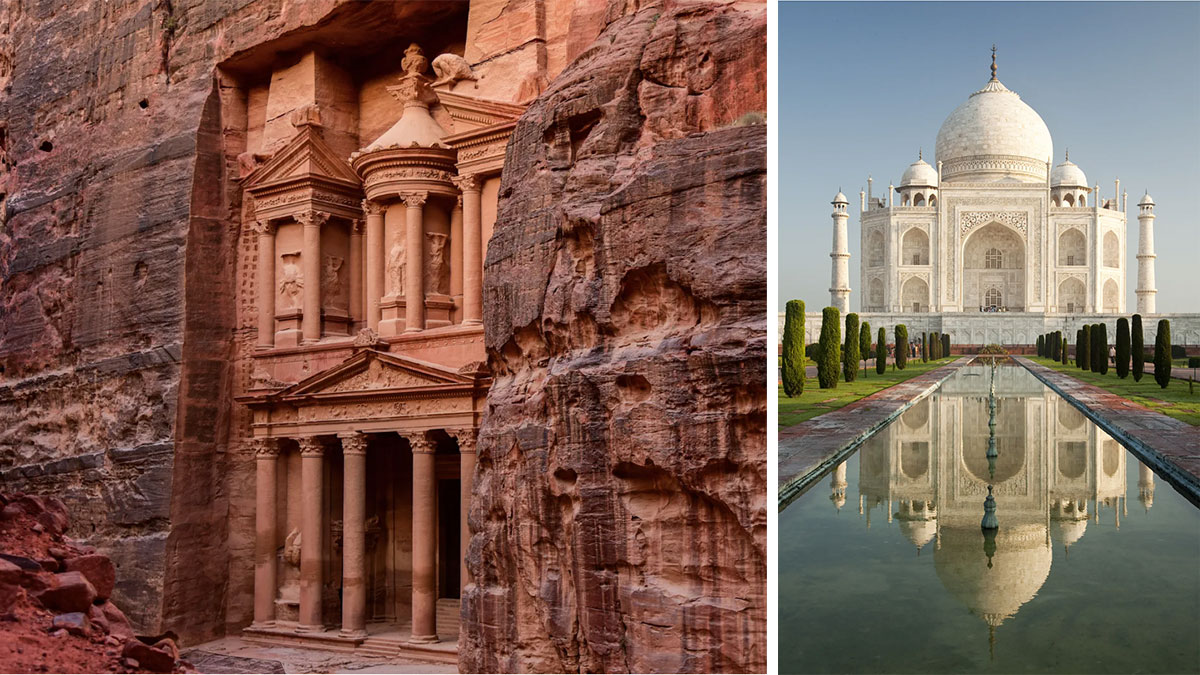The future has always excited the minds of mankind. After all, it is there that all the best, progressive, and fantastically beautiful is found. But the past is fraught with no less mysteries. Here are five architectural masterpieces of antiquity, the carved details of which would be the envy of the most modern stone processing technologies of the 21st century.
Al Khazneh
Petra, Jordan
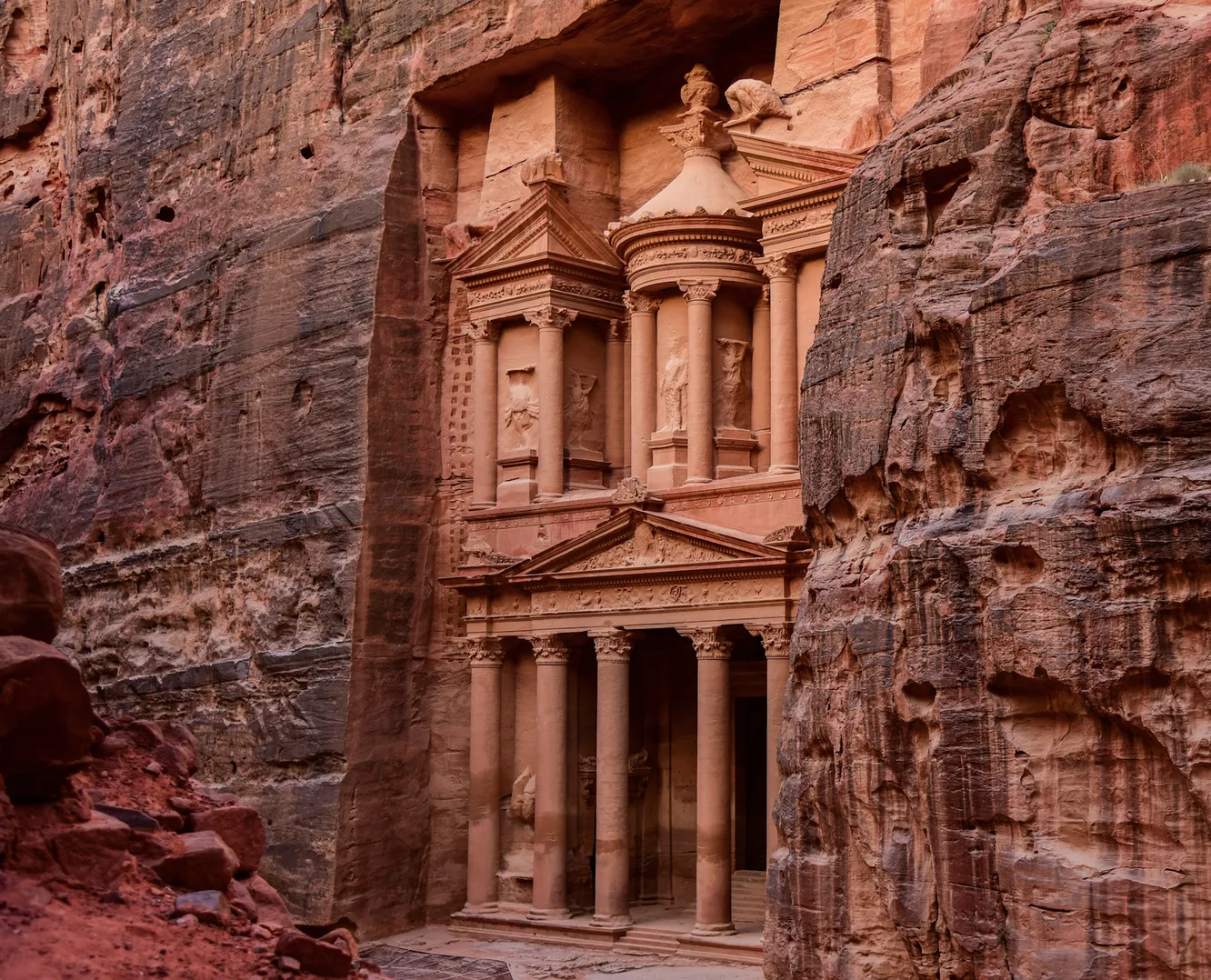
There are precious stones, and there are priceless ones, which have absorbed all the secrets of humanity. Among them, there is a whole lost city. His name is Petra. You can get into it only through the narrow, kilometer-long Siq gorge, sandwiched by almost hundred-meter-high rocks on both sides.
However, everything here is made from rocks: palaces, temples, city buildings, tombs, and burial halls. But the most beautiful creation of ancient stone-cutters is, undoubtedly, El-Khazneh, the famous Treasury of the capital of the ancient Nabataean kingdom.
Every detail of its facade seems to tell its own story. Intricate patterns, curved lines, and bizarre shapes give the impression that each carving is part of some large, mysterious code.
Pink sandstone, illuminated by the sun, creates incredible plays of light and shadow. Depending on the time of day, the facade of the treasury takes on different shades, which gives it an even more mystical and mysterious aura. It is believed that this new world wonder was built as a mausoleum and crypt in the early 1st century AD during the reign of King Aretas IV Philopatrix.
Buddha statue
Leshan, China

The giant Maitreya Buddha sculpture in Leshan is the largest Buddha statue in China and one of the largest in the world. A gigantic figure is carved into the body of a red rock at the confluence of three rivers. It is over 71 meters in height, its shoulders reach more than 28 meters in width, and each eyebrow is 6 meters long. Construction of the Future Teacher began in the Tang era in 713 by the monk Hai Tong and was completed in 803 during the Song dynasty.
According to legend, residents asked the wise monk for help to calm the dangerous flows of the Minjiang River. The monk decided to carve a Buddha statue from the rock to appease the water spirits and prevent floods. The amazing detail in the depiction of the hair, face, and hands of the giant sage amazes the imagination even today.
Temple of the Sun
Konark, India
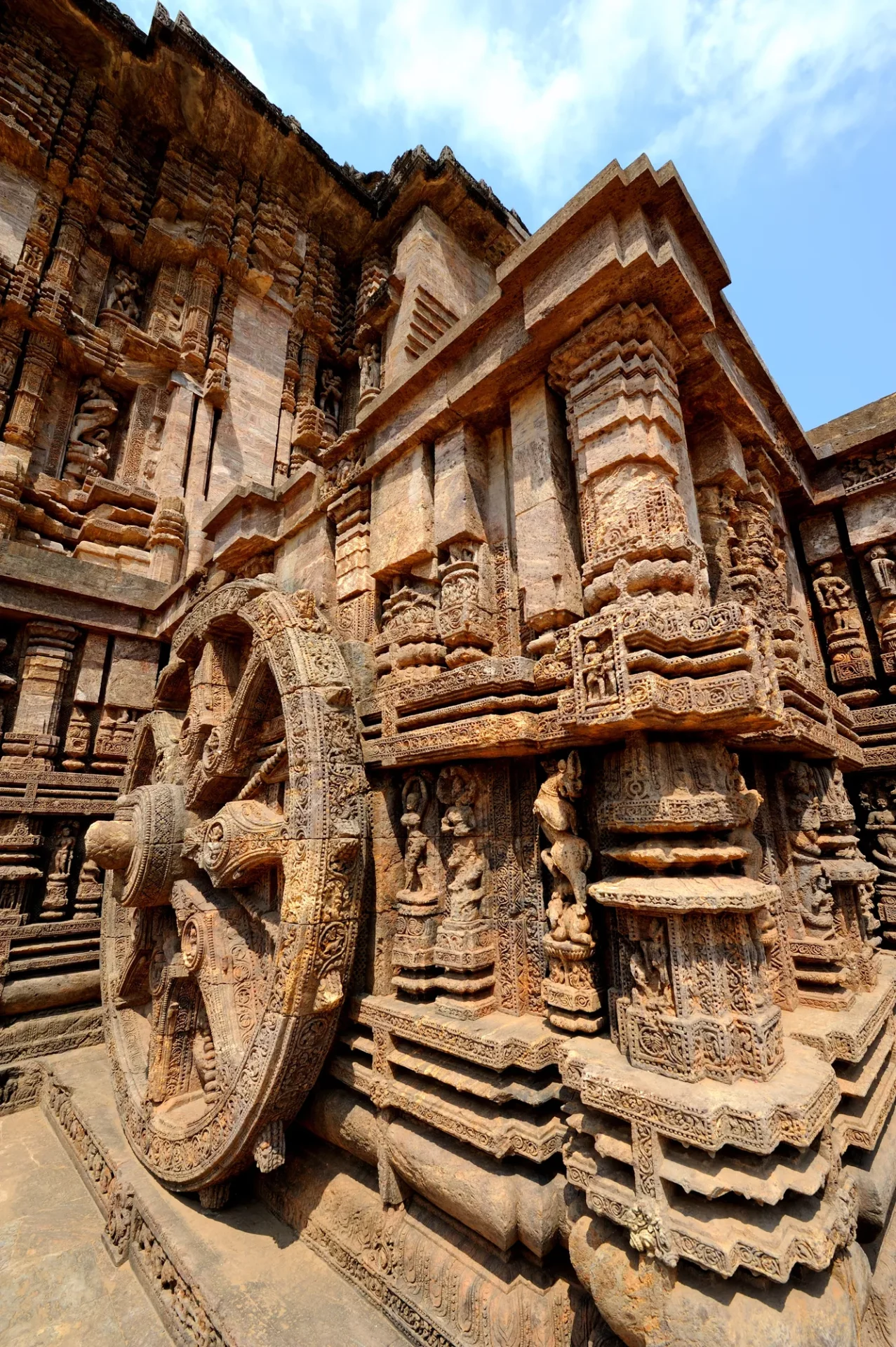
The splendor of the Surya Temple is manifested in all details: from elegant ornaments to complex sculptural compositions. Even now, despite the passage of time, he continues to amaze with the skill of his performance. Its construction dates back to around 1250, and its creation is associated with the ruler of the Ganga dynasty, Narasimhadeva I.
The temple is built in the shape of a solar chariot. Each wheel has eight petals representing the days of the week, and 24 columns located around it correspond to the hours of the day. Many of the sculptures in the temple tell stories from the epic texts Mahabharata and Ramayana.
Expressiveness and a high level of detail make them real works of art. The amazingly subtle stone carving serves as a connecting thread of times, passing on to descendants the most important moments from Indian mythology.
Temple of Hatshepsut
Luxor, Egypt
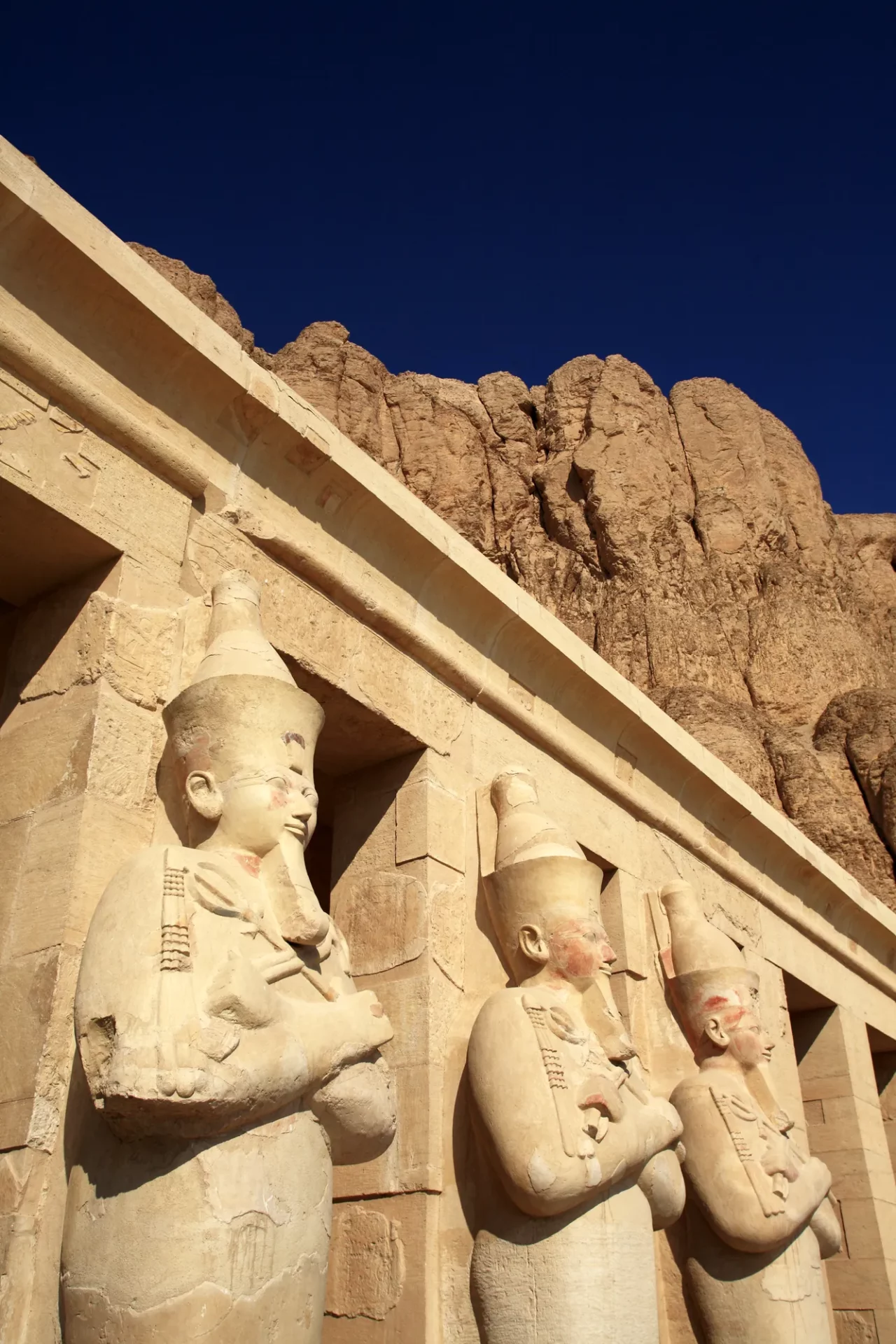
The temple was built in the direction and with the active participation of the legendary female pharaoh Hatshepsut, who ruled Ancient Egypt in the 15th century BC. e. The three-level rock-cut tomb in the middle of the hot desert is an outstanding example of New Kingdom architecture.
The temple was created by the chief architect Senenmut and represented a bold architectural solution of those times with spacious terraces, colonnades, and ceremonial halls. The upper level includes a temple in honor of Amon Ra, the middle is dedicated to Hatshepsut, and the lower connects them and contains a garden and pavilions. The walls of the terraces and temple are decorated with reliefs and detailed images dedicated to ancient Egyptian mythology, the reign and daily life of the queen.
Taj Mahal
Agra, “India”
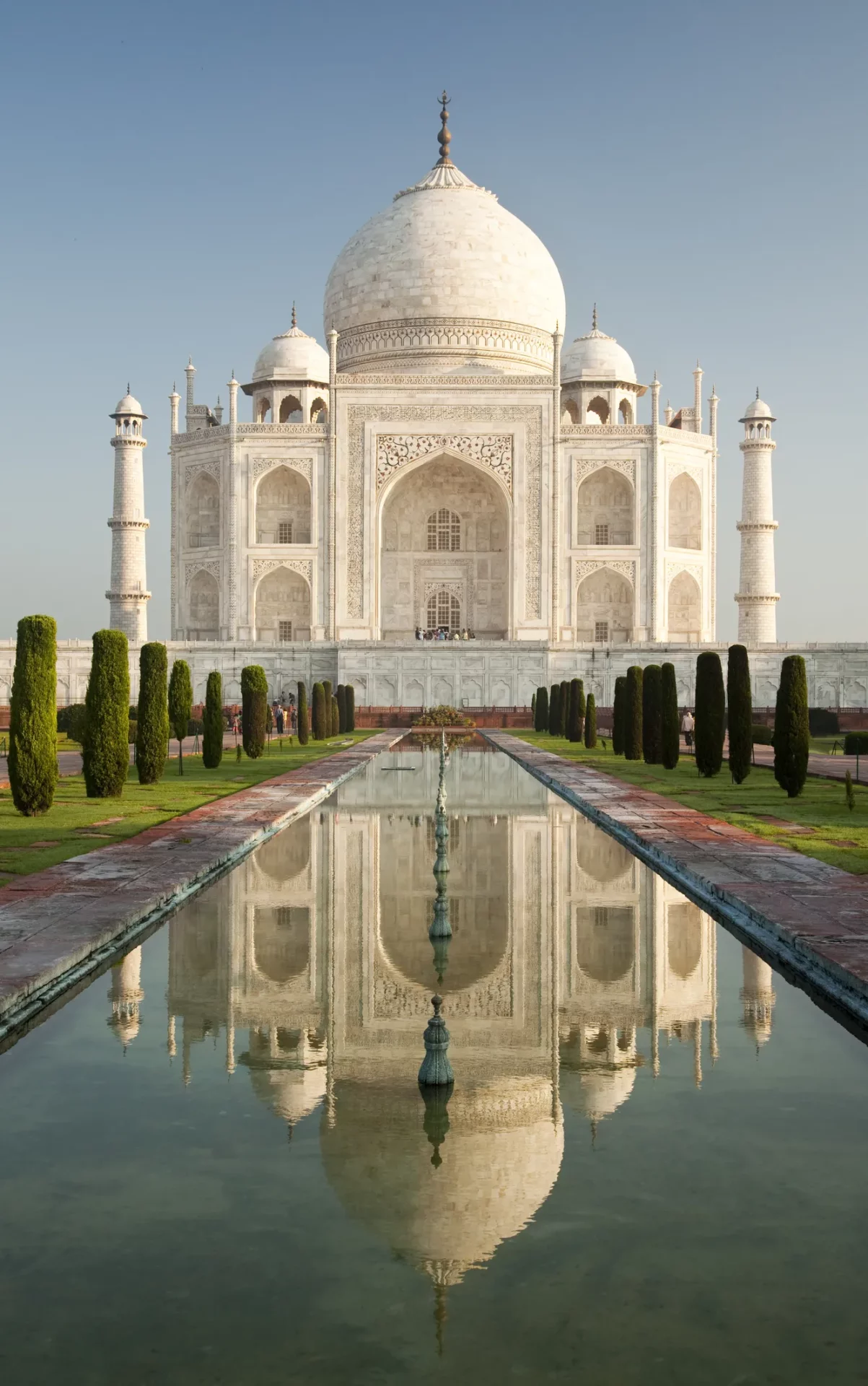
The Greatest Palace is a symbol of true devotion, and its creation was the most powerful manifestation of love in the history of architecture. Shah Jahan was so depressed by the death of his beloved wife that in her memory he ordered the construction of a mausoleum, the most beautiful of which will not be in the whole world.
Construction began in 1632 and took more than 20 years. Thanks to the highest skill of the architects and the special technique of carving and finishing marble, the snow-white tomb looks more like a fairy-tale palace than a creation of human hands.
This is poetry written with feelings and embodied in stone. An eternal love story that continues to beat in the hearts of those who have ever seen this architectural masterpiece.

